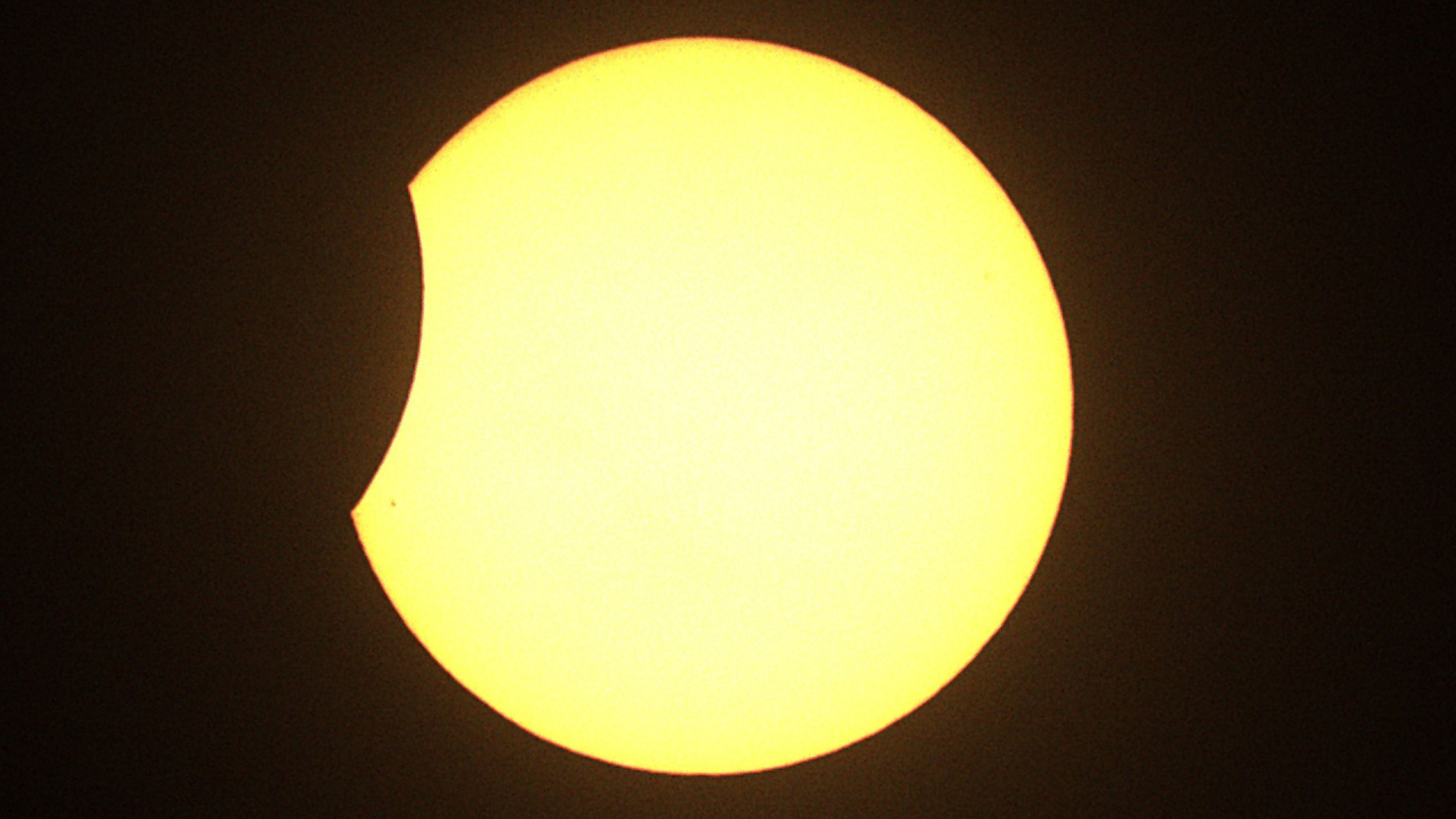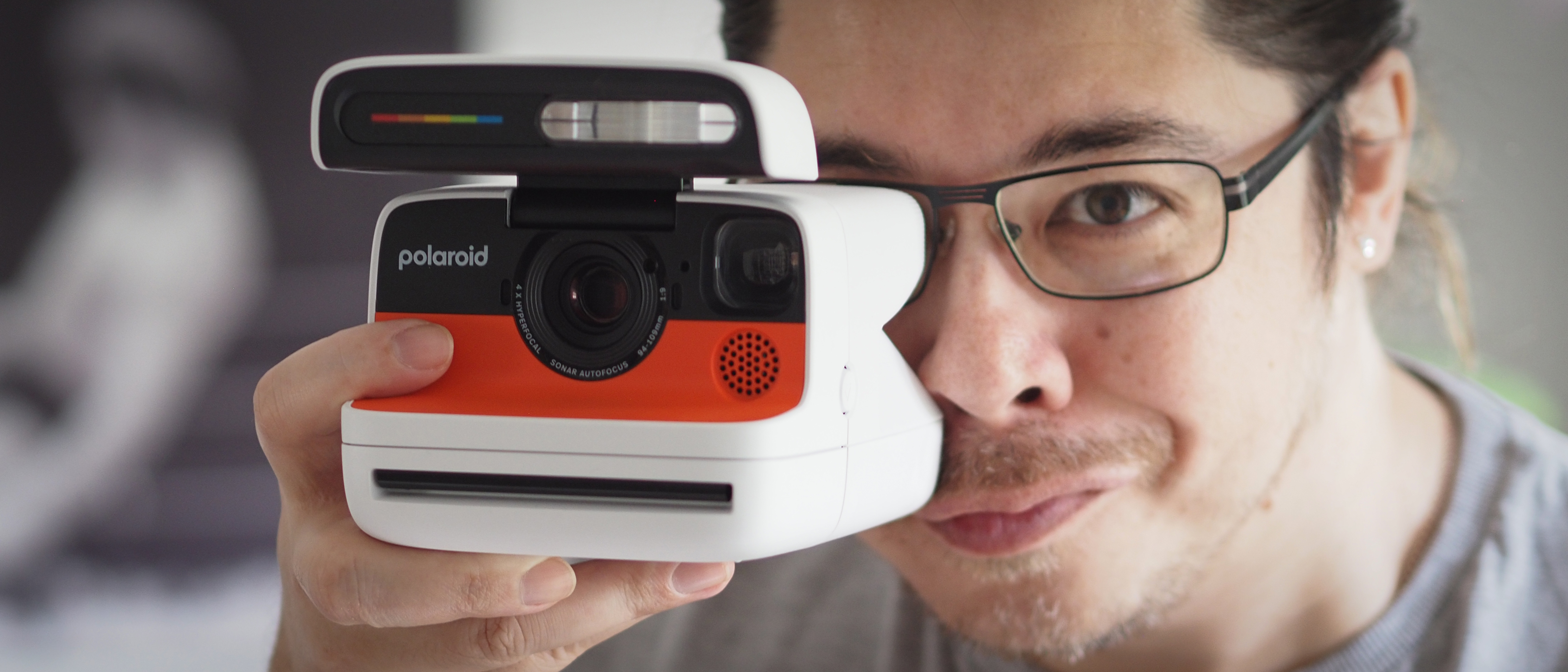Best solar eclipse binoculars in 2025
Get set for a close-up view of the solar eclipse safely with a pair of specialist solar binoculars
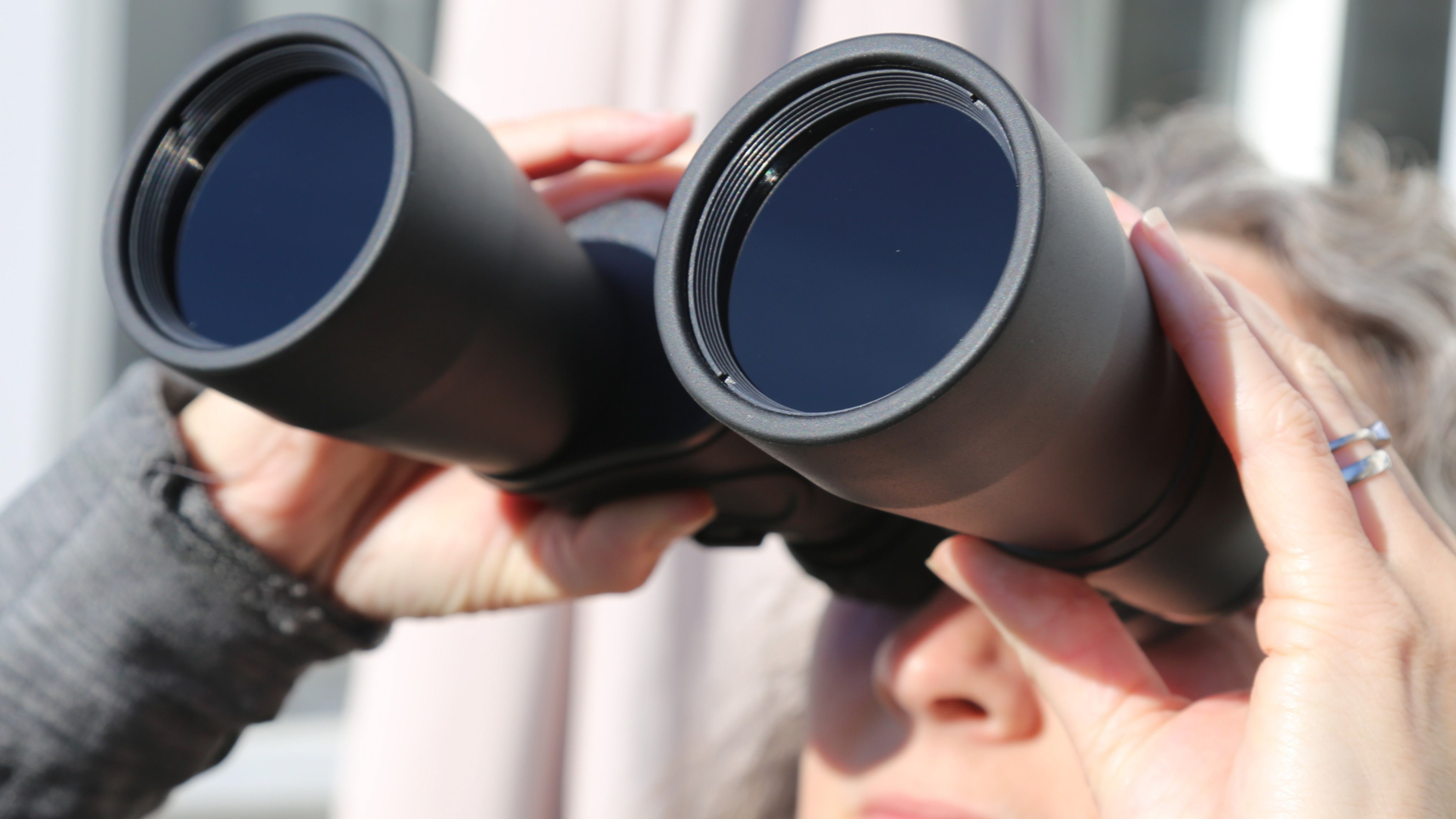
Are you after the best budget binoculars for the one of the two partial solar eclipses in 2025? If you've ever seen a solar eclipse, you will know how fiddly solar eclipse glasses can be.
Sure, protecting your eyes from dangerous infrared light, UV light, and bright sunlight is imperative while looking at the sun. However, not only do solar eclipse glasses get easily damaged, but they obviously don't offer any magnification.
Cue solar binoculars, which have built-in solar filters on their objective lenses to allow in only safe levels of sunlight.
There are only two major brands of solar binoculars, Lunt and Celestron, and in this buyer’s guide, we’ve covered six models. Happily, the products available cover all kinds of magnifications, from portable and pocket-sized 10x25 binoculars (that’s 10x magnification and 25mm aperture objective lenses) to heavier 20x50 binoculars.
Within the small range available you’ll find both roof prism (for small and portable binoculars) and Porro prism (for large and affordable) designs. Crucially, the solar filters used all conform to the ISO 12312-2:2015(E) international safety standard. While that should reassure eclipse-chasers about safety, there is a major difference between Celestron and Lunt products in terms of filter coating.
Both deal in white light, but while Celestron products use polymer solar filters for a white view of the sun with just a hint of blue, Lunt products employ glass filters, which make the sun look a yellow-orange. Ultimately, it comes down to personal preference. Both can be used for observing eclipses as well as just for looking at the sun, which is currently displaying lots of sunspots around its once-a-decade (or so) solar maximum in the mid-2020s.
Although solar binoculars make it safe to view the sun, it pays to know an extra safety technique. After all, when bringing solar binoculars up to your face it’s all too easy to look at the sun – and that goes double if you have problems locating it through the otherwise very dark optics. A good technique here is to wear a wide-brimmed hat, which will instantly block the sun from getting in your eyes while you find the sun and adjust the binoculars.

Jamie is the editor of WhenIsTheNextEclipse.com, and travels the world watching every eclipse he can. He has personally tested all the solar binoculars in this guide.
Quick List
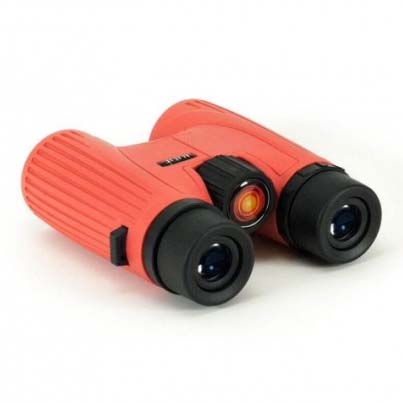
Best Rugged
If you want a pair of rugged binos to watch the solar eclipsesthen these are the best around.
Read more below
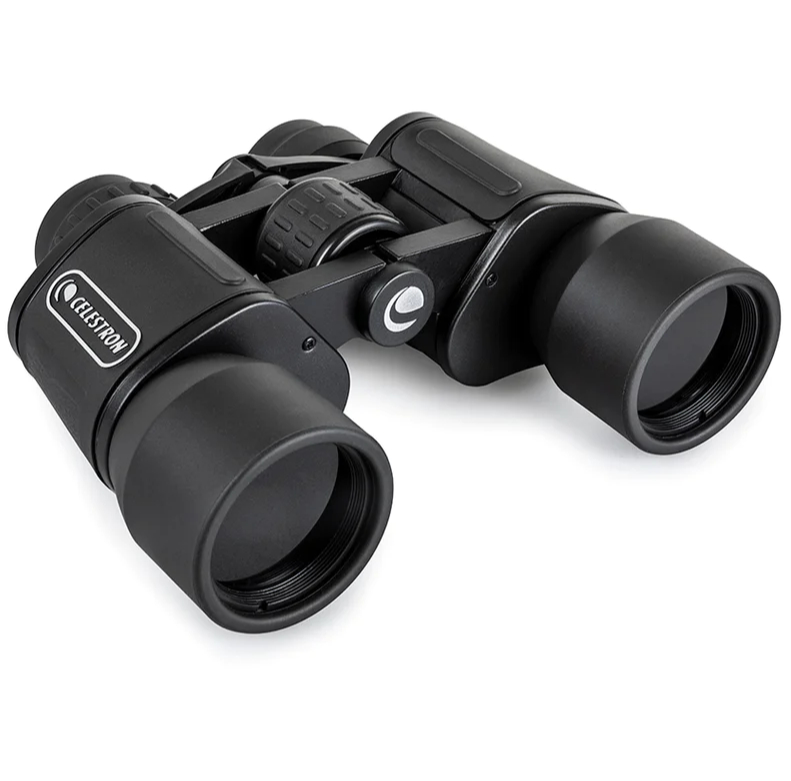
Best value
If value is on your mind and on a strict budget these will help you watch the solar eclipse, while also saving the dollars.
Read more below
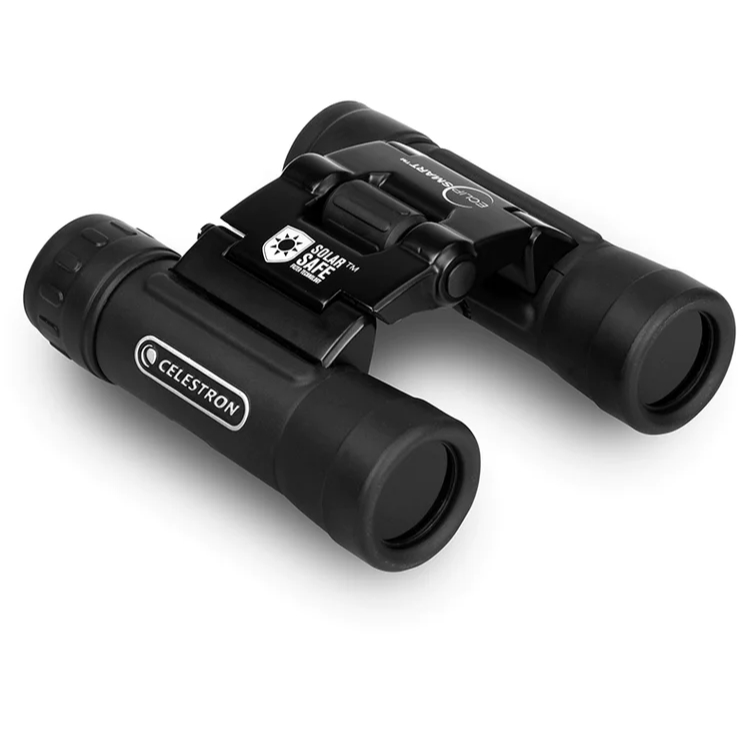
Best portable
If you want a pair of binos that you can fit in your pocket for watching the solar eclipse wherever you are, then these are the best fit.
Read more below
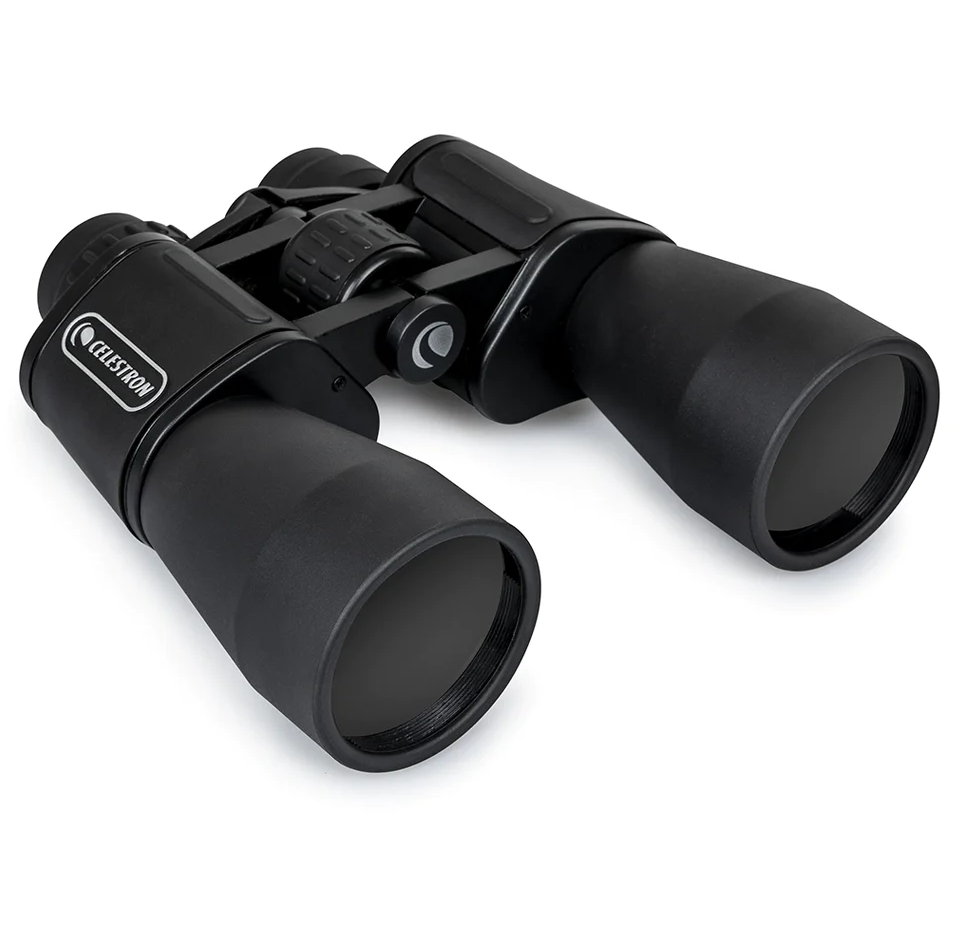
Best for stability
If you want to have the best view in the house then you want to mount them on a tripod to avoid shake, these binos from Celestron prove to be very popular.
Read more below
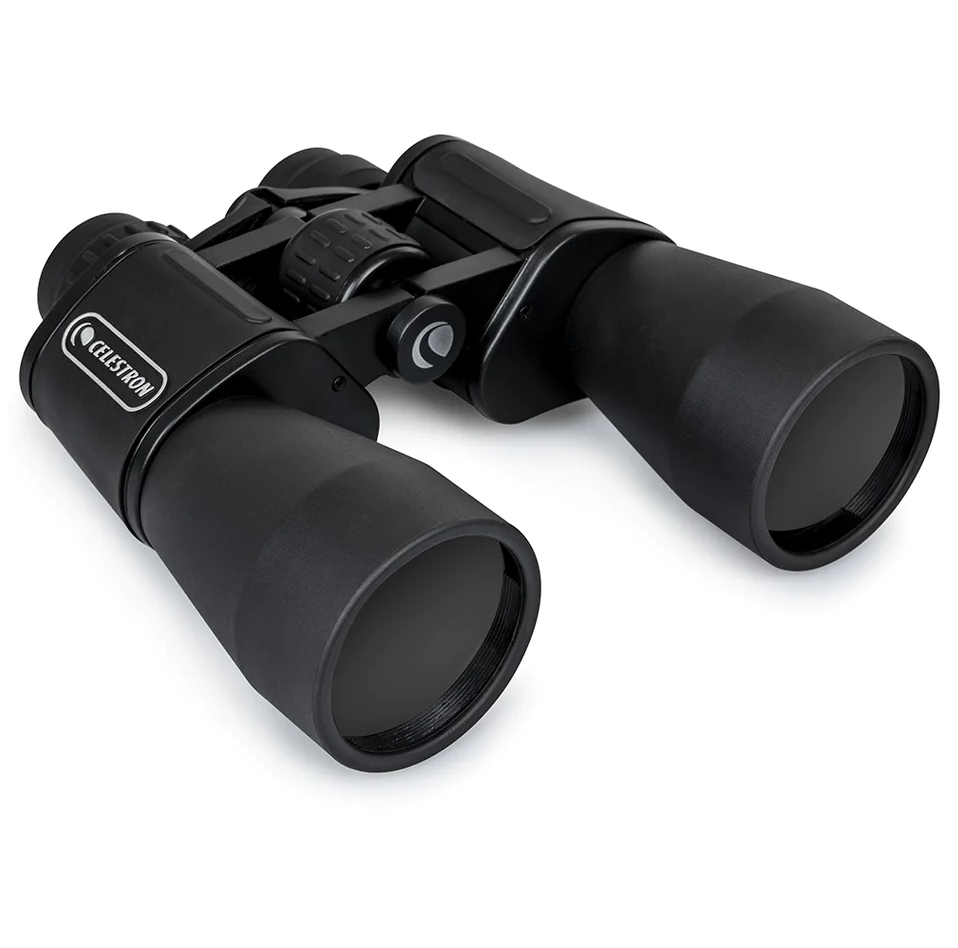
Best for high magnification
If you're looking to see every detail of the solar eclipse, these high-magnification binos are the perfect match for keen observers.
Read more below

Best under $30
If you're looking it pick up some binos on a whim to view the solar eclipse one and maybe not again these under $30 are the perfect pick up and forget.
Read more below
The best solar eclipse binoculars
Why you can trust Digital Camera World
Best rugged
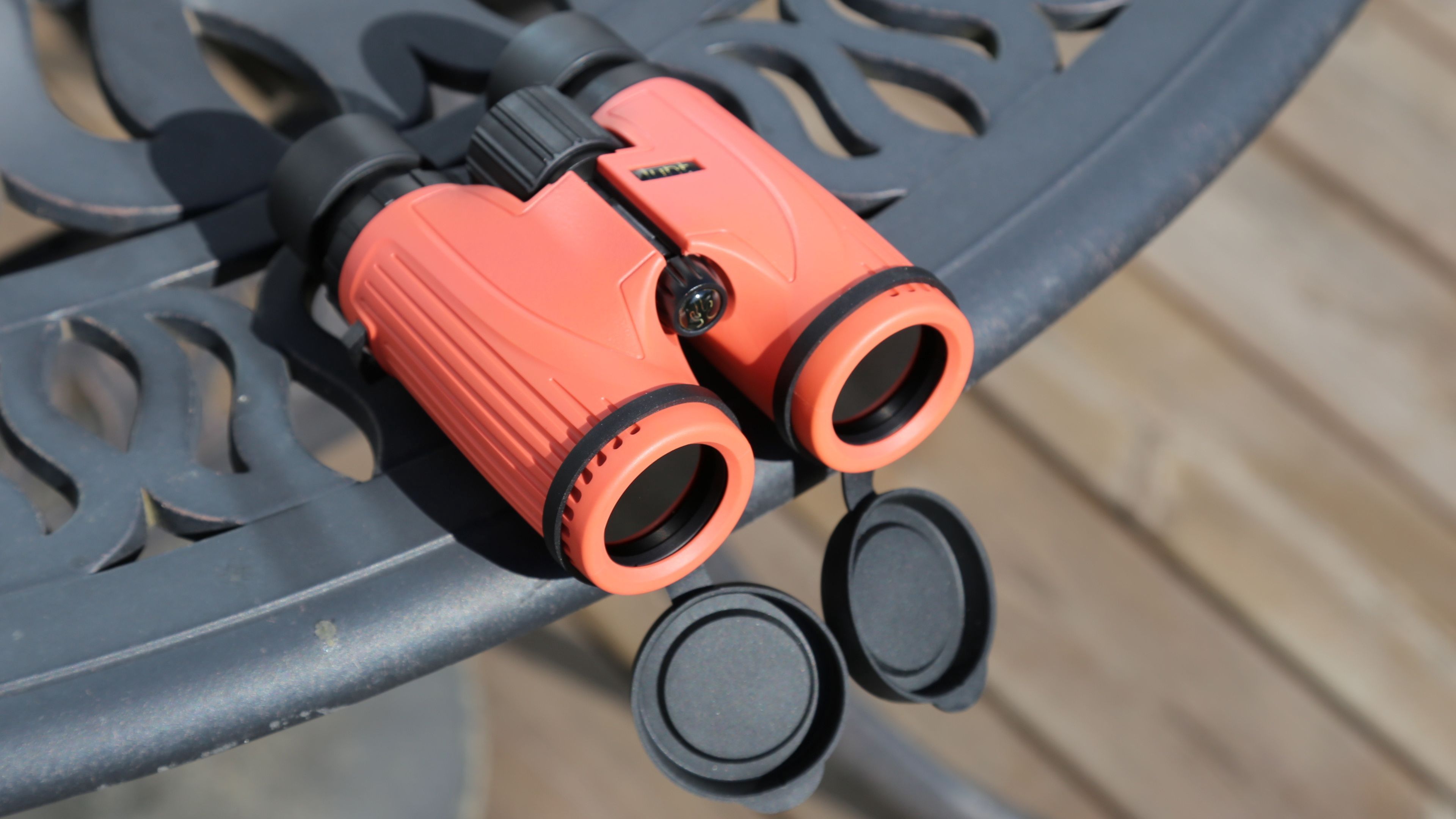

1. Lunt SUNoculars 8x32 solar binoculars
Our expert review:
Specifications
Reasons to buy
Reasons to avoid
When choosing something for getting a close-up of the eclipse it’s wise to go for a relatively small product with a magnification that impresses – and the Lunt SUNoculars 8x32 achieves that. Small but with just the right amount of magnification to make it worthwhile having, these roof prism binoculars are a totally different (and more portable) beast to both Lunt’s SUNoculars Mini and Celestron’s large roof prism products.
For starters, it has by far the best build quality, with the roof prism barrel array meaning a compact design, but a reassuringly solid feel. It also has a hard plastic covering and lens caps that are attached, simply hang ingdown below the objective lenses when in use.
Optically the Lunt SUNoculars 8x32 are a mixed bag. I found the sun very easily, focused quickly and enjoyed sharp views of sunspots with the added bonus of lots of eye relief from the twist-up eyecups. That makes them more immersive than all the other solar binoculars featured here.
The non-coated internal dye white light solar filters used don’t block quite as much light as the others on test here. It’s perfectly safe and creates a lovely warm white-yellow view of the sun, but it does mean significant glare around the disk.
However, if you want a good balance of portability and magnification within a rugged design, the Lunt SUNoculars 8x32 are hard to beat. It’s sold in a choice of colors - black, yellow, orange or blue.
Best value
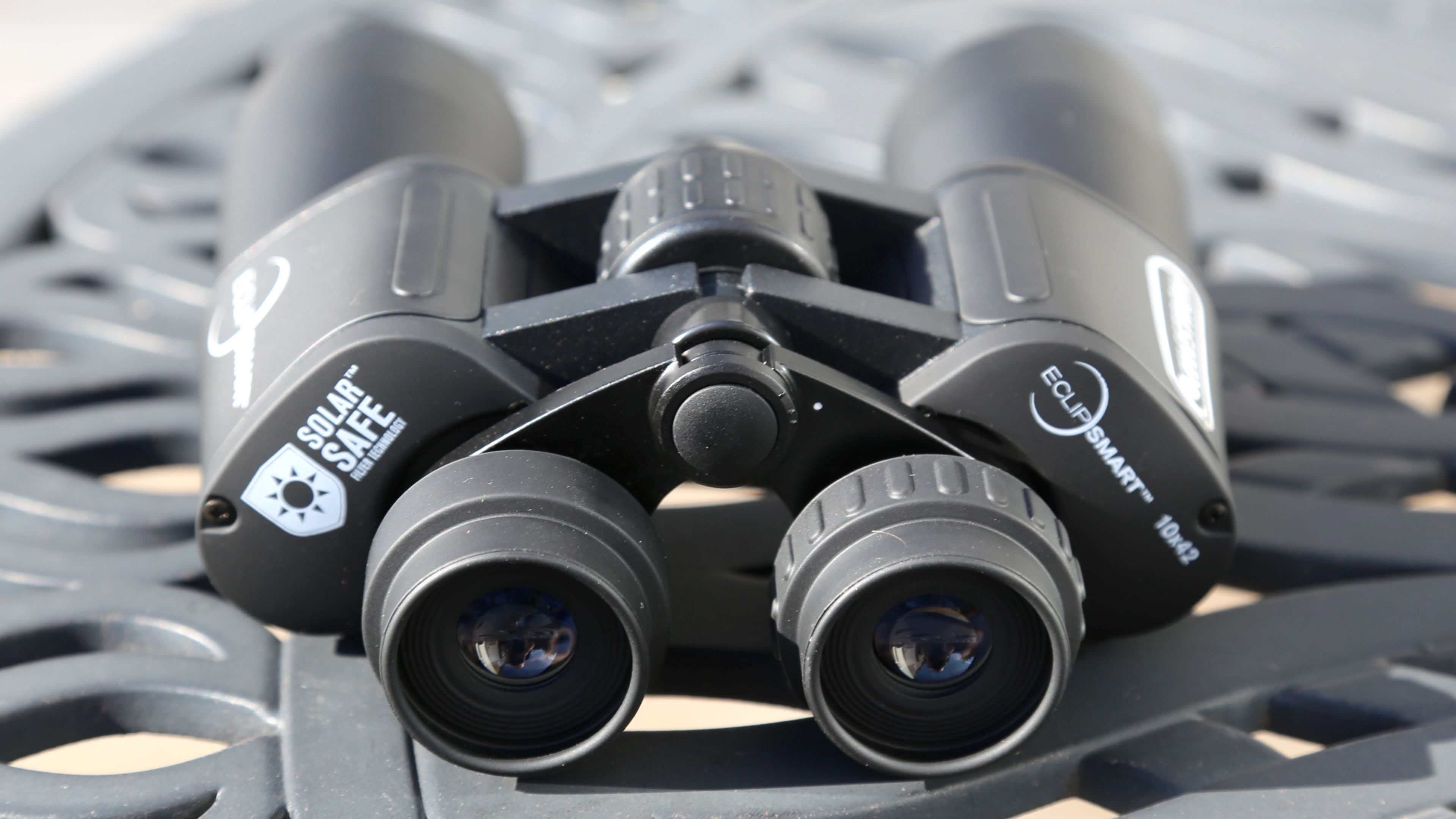
2. Celestron EclipSmart 10x42 Porro solar binoculars
Our expert review:
Specifications
Reasons to buy
Reasons to avoid
Light enough to hold steady while also offering decent magnification, these binoculars are excellent for watching the progress of an eclipse while also being good for studying the surface of the sun.
Low-priced and with just the right amount of magnification for stunning close-ups of sunspots while also being easy to hold steady, the Celestron EclipSmart 10x42mm offer the perfect balance for those wanting something impressive without being too big and bulky. Crucially, it’s easy to find and focus on the sun, with a nice, bright and sharp view, although we did notice both a blue and yellow line around the limb, tell-tale signs of color fringing.
Although it’s the most impressive of Celestron’s three Porro prism binoculars in its EclipseSmart range – including a slightly better build quality – the Celestron EclipSmart 10x42mm has a lot in common with both the 12x50 and 20x50 models, both good and bad.
All have thumb pads underneath the barrels that make it easy to grip, and offer plenty of eye relief. However, the shoulder case included is of very basic quality, as is the neck strap, while the separate lens caps on both the lens caps and eyecups are easy to lose. What this model does lack is an adaptor for attaching a tripod, though that’s something that simply isn’t required at this easy-to-handhold 10x magnification.
See read: Best budget binoculars for under $100
Best portable
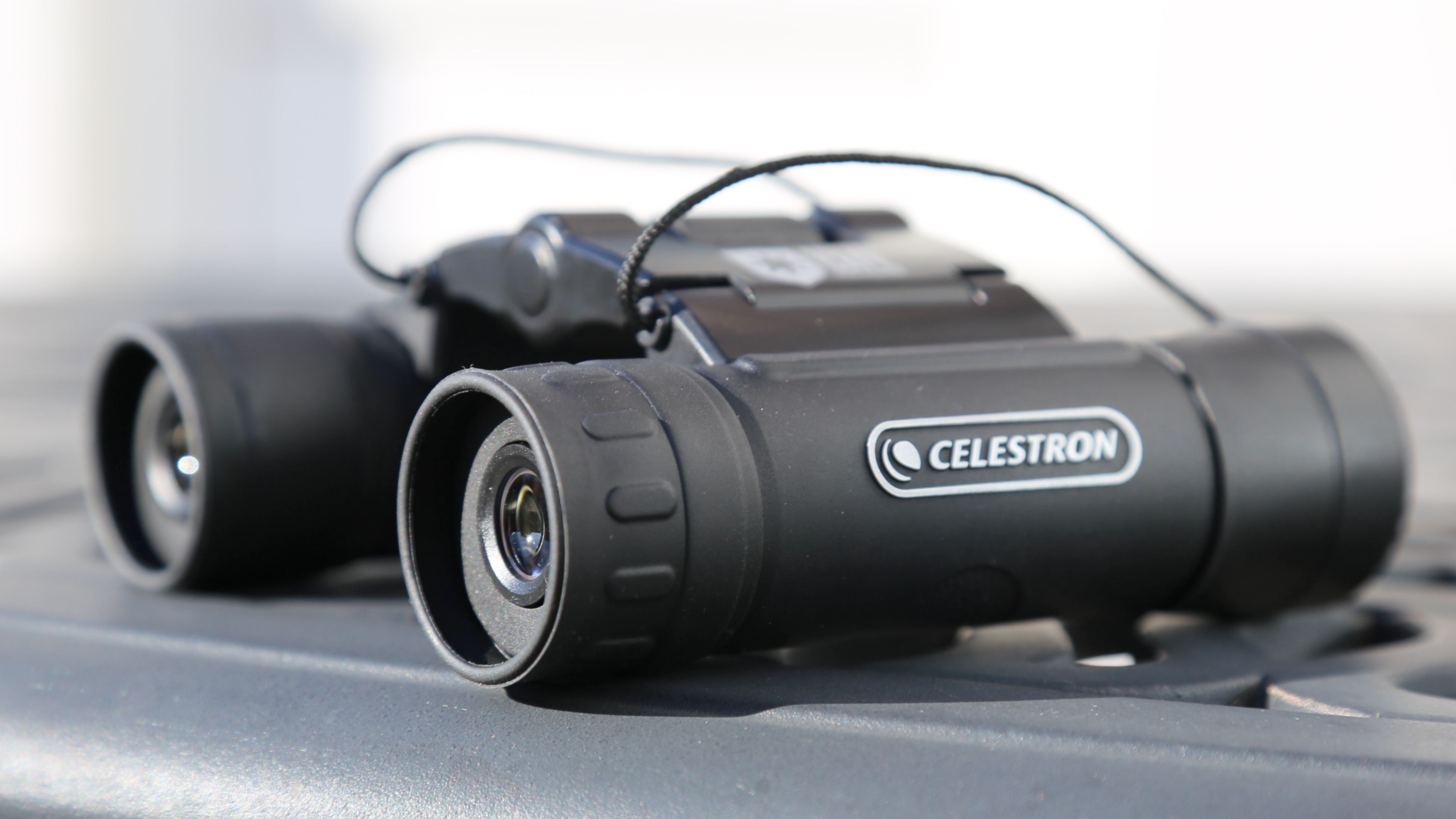
3. Celestron EclipSmart 10x25 roof solar binoculars
Our expert review:
Specifications
Reasons to buy
Reasons to avoid
If you just want to keep track of the progress of the moon across the sun during an eclipse and you’re not interested in seeing sunspots then the Celestron EclipSmart 10x25mm roof solar binoculars are for you.
A tiny pair of binoculars not much bigger than the footprint of a smartphone, these roof prism binoculars offer 10x magnification, but only 25mm objective lenses. That means a small bluish-white image of the sun that lacks brightness, though the wide angle of view makes them very easy to use to locate the sun quickly. In our test, we could just about see some sunspots, though not nearly as many – and not as clearly – as larger, higher magnification brighter solar eclipse binoculars.
It’s a no-frills package, with a simple string for a neck strap, but since they’re so lightweight the Celestron EclipSmart 10x25mm roof solar binoculars can hang effortlessly around the neck during an eclipse. Also in the box is a pouch that has a belt loop, but they can just as easily live in a pocket. The only real downside to these travel-friendly solar binoculars is the lack of eye relief.
See also: Best night vision goggles & binoculars
Best for tripods
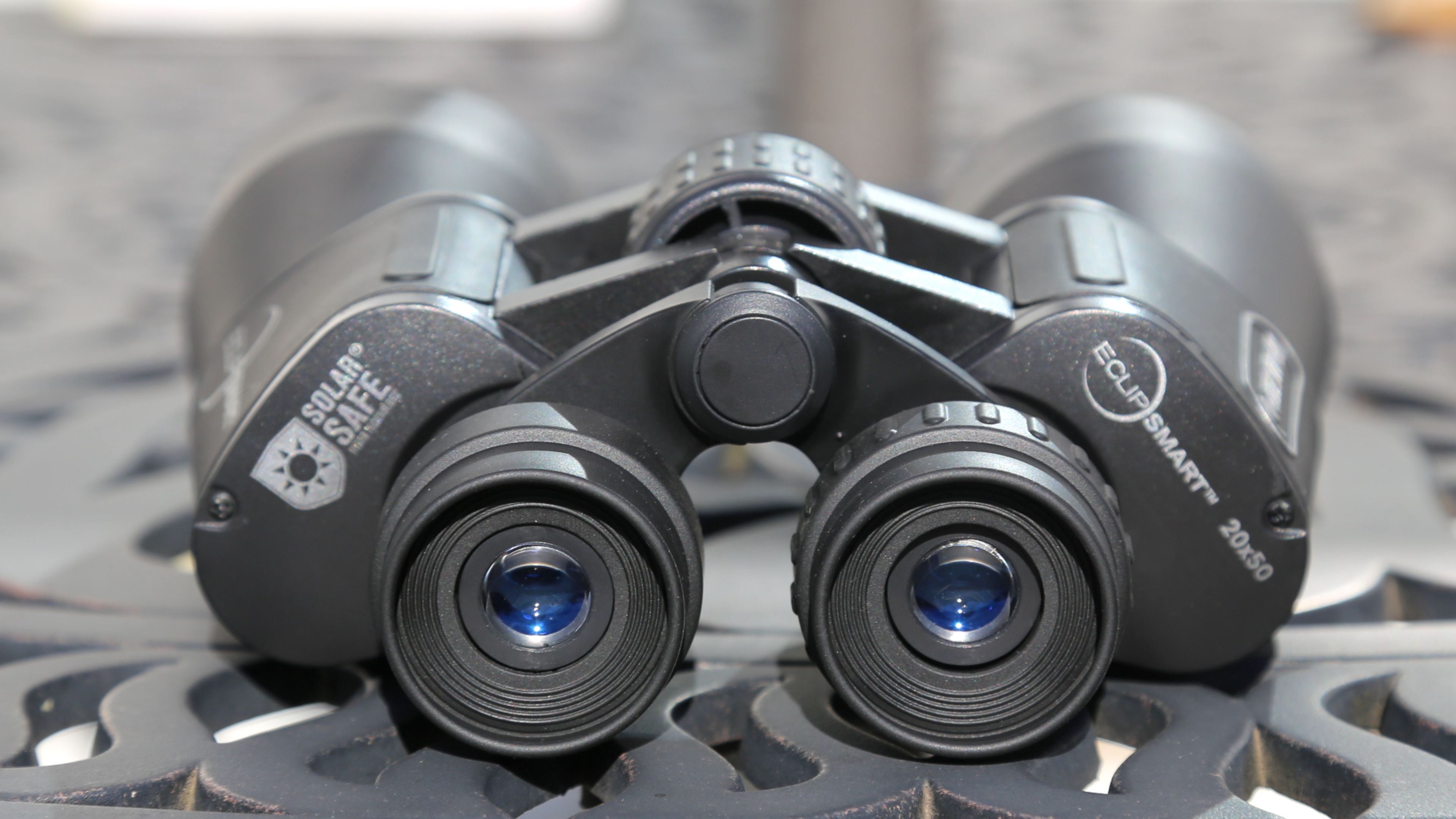
4: Celestron EclipSmart 20x50
Our expert review:
Specifications
Reasons to buy
Reasons to avoid
Many people find binoculars that magnify 10x or higher quite difficult to hold steady and that certainly applies here. Although almost identical to both the 10x42 and 12x50 models here, this 20x50 binocular is just too heavy to hold steady.
What’s more, the narrow field of view makes it very hard to quickly find the sun. This is why the tripod jack between the barrels of this Porro prism binocular is so useful. When held steady on a tripod the Celestron EclipSmart 20x50 offers fabulous close-ups of sunspots on the surface of the sun amid a blueish-white view of the solar surface. We also didn’t notice many traces of blue and yellow color fringing around the sun.
Impressive when mounted on a tripod, the Celestron EclipSmart 20x50 is best thought of as a travel-friendly alternative to taking a small telescope to see an eclipse rather than as solar binoculars for hand-holding.
As with the others in the range, the Celestron EclipSmart 20x50 comes with thumb pads underneath the barrels and lots of eye relief, but with loose lens laps, a thin neck strap and a basic shoulder case.
See also: The best binocular tripod adapters
Best high-magnification
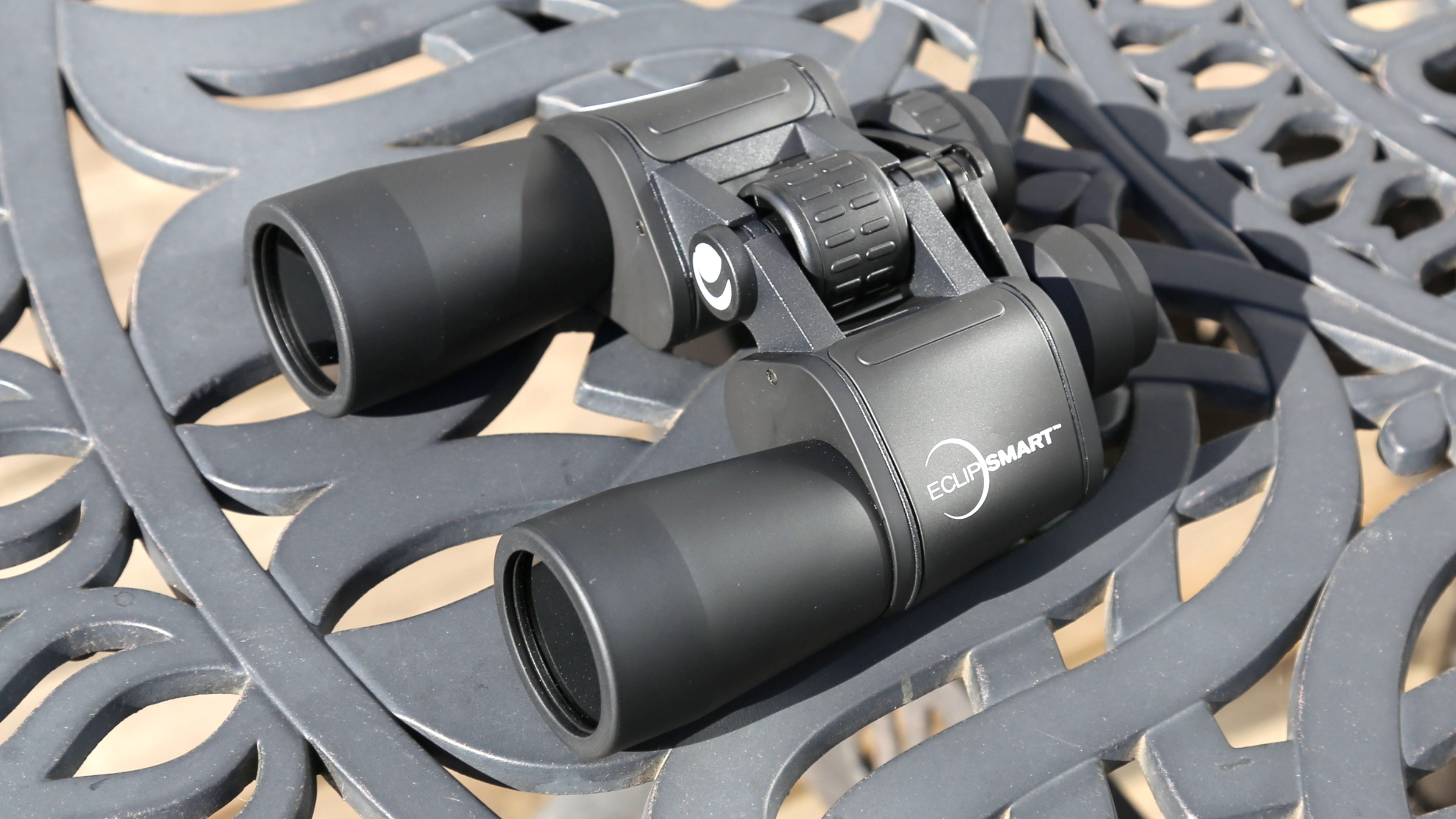
5. Celestron EclipSmart 12x50 Porro solar binoculars
Our expert review:
Specifications
Reasons to buy
Reasons to avoid
If you want as much magnification as possible for finding sunspots on the solar surface then the Celestron EclipSmart 12x50 is a tempting proposition. With 12x magnification and solar filters permanently attached to its 50mm objective lenses, these Porro prism binoculars off a bright, blueish-white view of the sun with only a trace of blue and yellow color fringing.
It’s easily possible to find sunspots and even split sunspots in dense areas of activity, but there are some caveats. The main issue is that while it is possible to hold the Celestron EclipSmart 12x50 in the hand to use at an eclipse (or just for sunspot viewing), it’s a wobbly affair.
The weight of these binoculars is such that it’s better to mount them on a tripod (using the built-in tripod jack and an L-shaped binocular adaptor) or, at the very least, sit on a reclining chair when you use them.
By using either a tripod or yourself to support some of the weight it becomes easier to keep them steady. That’s if you can find the sun with them, something that takes a little practice at this magnification – it’s certainly something you should master before eclipse day.
See also: Best binocular harness
Best under $30
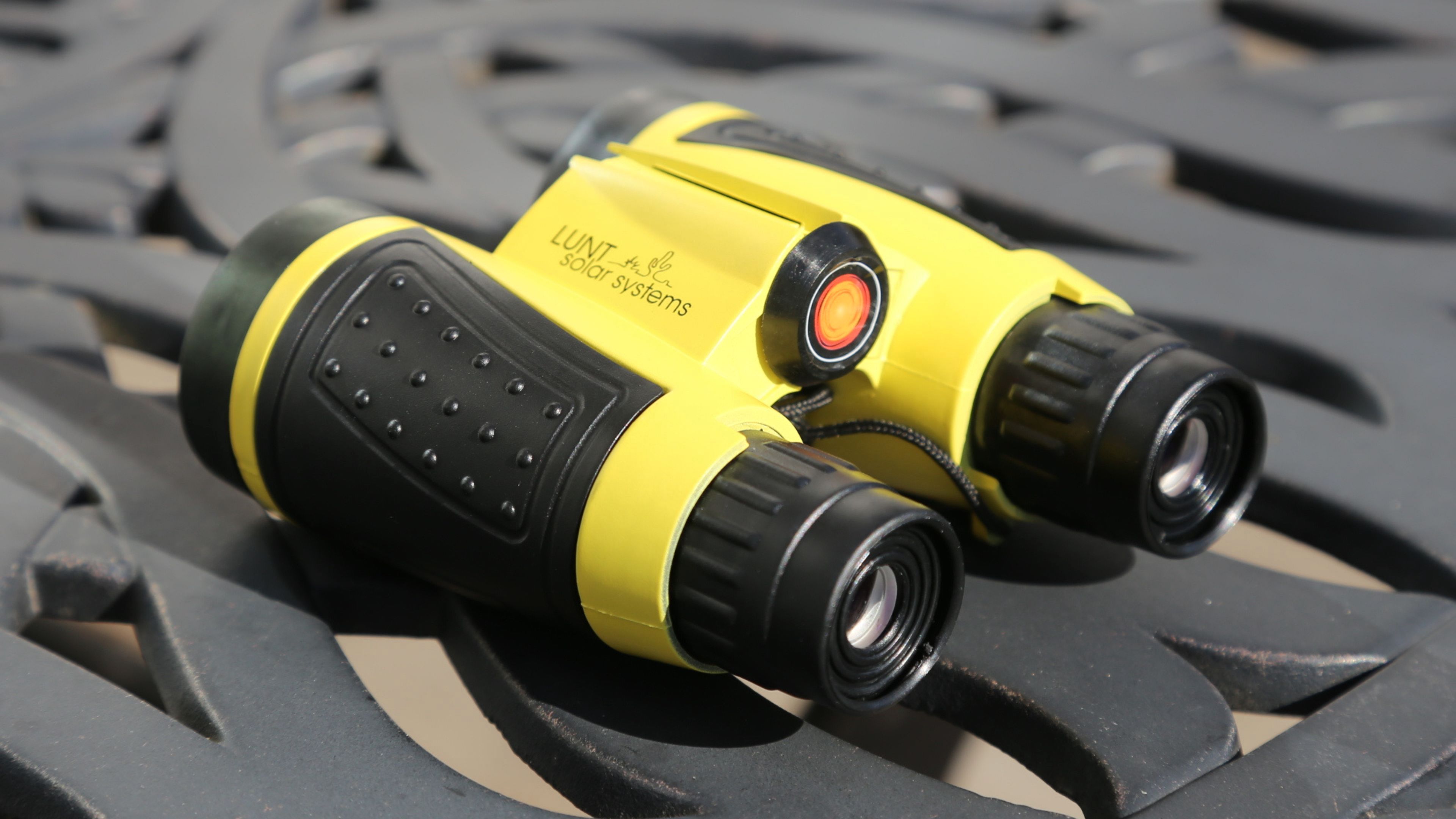
6. Lunt SUNoculars Mini 6x30 solar binoculars
Our expert review:
Specifications
Reasons to buy
Reasons to avoid
Although sold almost as a fun and colorful item for children (albeit with the proviso for adult supervision), the yellow, red or blue SUNoculars make for a handy and inexpensive accessory for eclipse-chasers after a little magnification.
Each eyecup can be adjusted for focus and, as a plus, they’re pocket-sized so easy to travel with. Although they weigh just 5.6oz/157g, the Lunt SUNoculars Mini come in a blister pack without any accessories but are hard-wearing enough to survive in a jacket pocket.
However, they’re not particularly fun to use. The internal dye filter creates a nice, bright and orange image of the sun that, despite it being too small to see sunspots, is perfect for following the passage of the moon across the sun.
The trouble is, there’s zero eye relief and the eyecups are so very small. Sure, that’s ideal for kids, in theory, but in practice, it offers very little protection from all that sunlight. Much larger, twist-up eyecups – as found on the larger Lunt SUNoculars – are, we think, much safer (as well as being more comfortable).
Other binocular guides
| Row 0 - Cell 0 | Row 0 - Cell 1 | Row 0 - Cell 2 |
| Row 1 - Cell 0 | Row 1 - Cell 1 | Row 1 - Cell 2 |
| Row 2 - Cell 0 | Row 2 - Cell 1 | Row 2 - Cell 2 |
| Row 0 - Cell 0 | Row 0 - Cell 1 | Row 0 - Cell 2 |
| Row 1 - Cell 0 | Row 1 - Cell 1 | Row 1 - Cell 2 |
| Row 2 - Cell 0 | Row 2 - Cell 1 | Row 2 - Cell 2 |
Get the Digital Camera World Newsletter
The best camera deals, reviews, product advice, and unmissable photography news, direct to your inbox!

Jamie has been writing about photography, astronomy, astro-tourism and astrophotography for over 15 years, producing content for Forbes, Space.com, Live Science, Techradar, T3, BBC Wildlife, Science Focus, Sky & Telescope, BBC Sky At Night, South China Morning Post, The Guardian, The Telegraph and Travel+Leisure.
As the editor for When Is The Next Eclipse, he has a wealth of experience, expertise and enthusiasm for astrophotography, from capturing the moon and meteor showers to solar and lunar eclipses.
He also brings a great deal of knowledge on action cameras, 360 cameras, AI cameras, camera backpacks, telescopes, gimbals, tripods and all manner of photography equipment.
